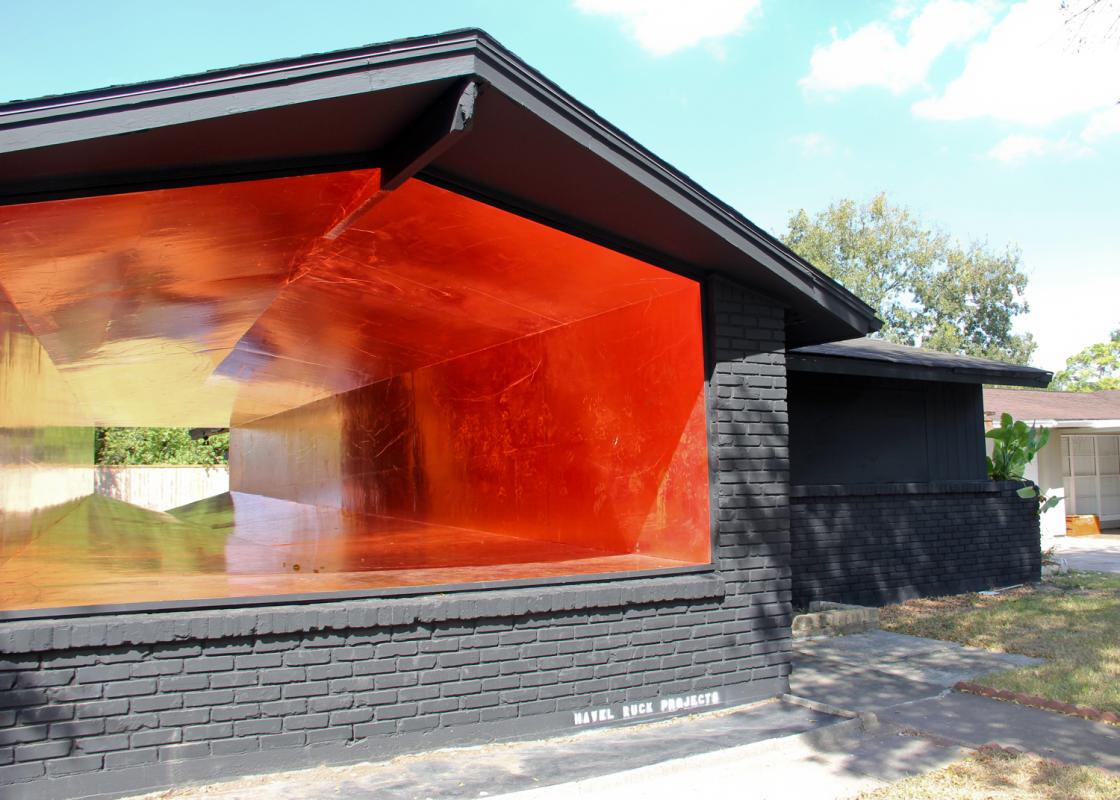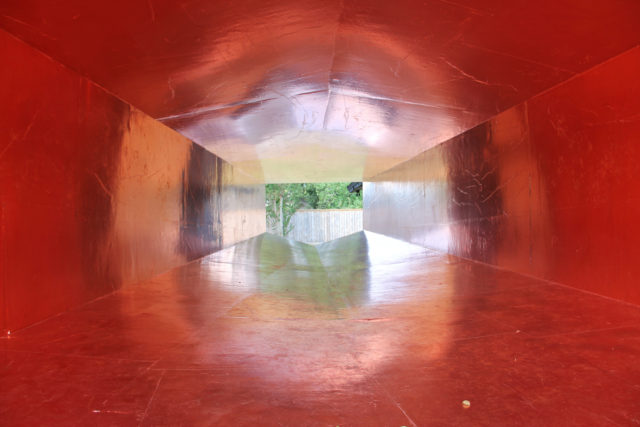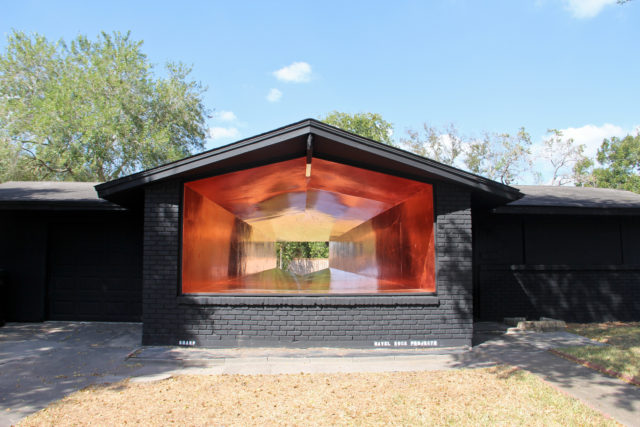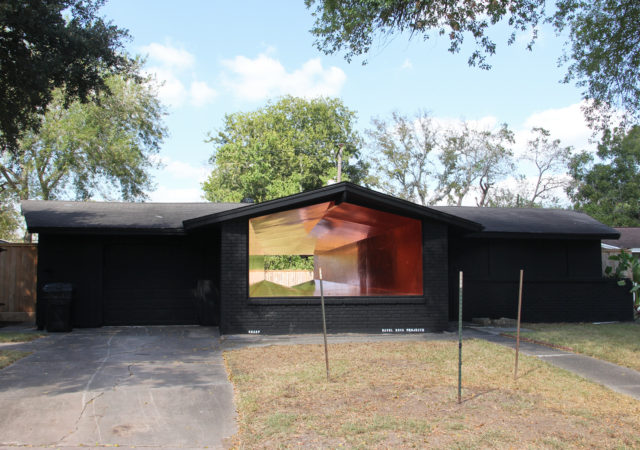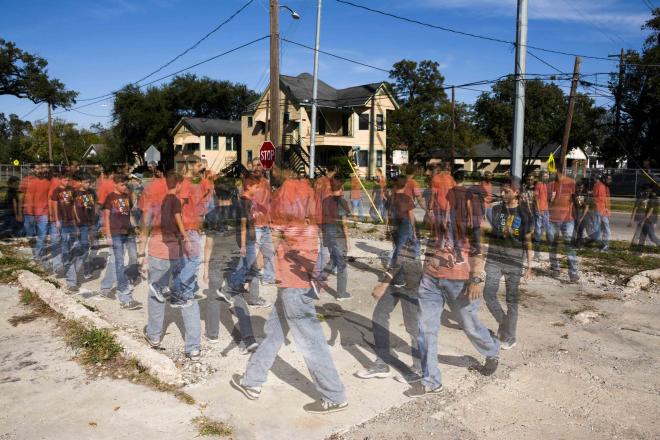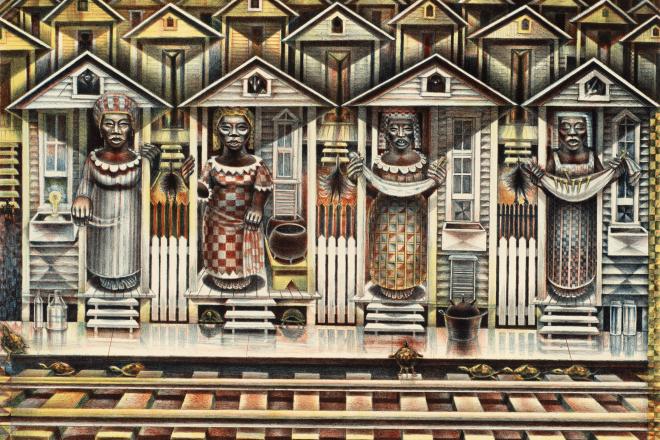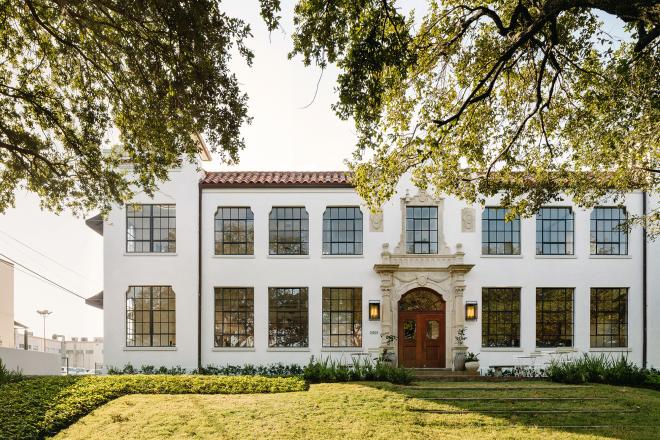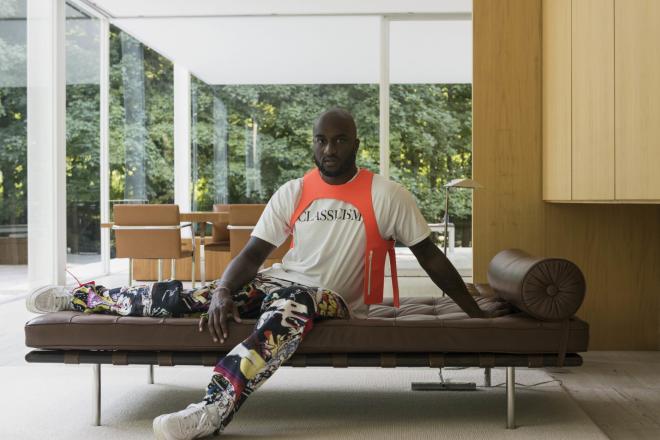"Sharp," located at 6822 Rowan Lane, is open to visitors daily for a period of a few months. Click here for a map.
On the 10-block shuttle bus ride from the remote parking to the latest house-conversion project by Havel Ruck Projects (Dan Havel and Dean Ruck), the driver felt that he needed to warn me. "People that weren't expecting it were startled. It's like arriving at a fire."
"Sharp" is one of Havel Ruck's conversions of an existing house, in place, in its setting. In its last life, it was a typical suburban house, a ranch on a slab with a yard. It had caught fire.
The material injuries can be seen if one looks for them, but the artists haven't called attention to that story, nor to the former life of the house at all, for that matter.
"Sharp" reminisces to the artists’ renowned "Inversion" (Art League Houston, 2005), having been given the tunnel treatment. A highly crafted, geometric void has been cut through the house front-to-back. The tunnel is lined with copper foil. We visit that tunnel from the front and back of the house.
Otherwise, the ranchburger has been quieted: only its outside is visible, and that's been painted flat black. The solid bulk of house asks not to be noticed, a neat trick by which the hovering copper gleam slicing the house becomes our sole focus. The tunnel is where people gather and look in from each end.
The immersion begins as I approach it, with its modest scale throwing sound echoes typical of a tunnel. When I arrived at the work some very playful boys were twirling and moving in every way in the space. Their play activated the piece and awoke its kaleidoscopic effects: their reflected colors danced.
I talked with artist Nestor Topchy, who brought up the late Houston artist Andy Mann. Some will know Mann's work from the video Christmas tree which the City placed in Tranquillity Park each year. Mann was a master of the kaleidoscopic, and the "keyhole" space of this project relates to his. "Sharp" is, on the other hand, distinct from a Turrell Skyspace. Here the light travels laterally. But in each very different artist --- Mann, Turrell, and Havel Ruck --- there is a drive toward making immersive works.
At the streetside wall, the tunnel mouth is an iconic "Monopoly house" cut out. Havel and Ruck discussed the original conditions that spurred their thought: "The ‘before’ house had a large framed picture window in front as the primary architectural feature, in the perfect generic form of a ‘house’ (by western standards). We were immediately drawn to that form as the catalyst of the idea, which quickly developed into the defined shape of a penetration."
The two ends of the tunnel are handled differently. At the rear, the same silhouette is smaller and upside down. Over the tunnel's length, one form merges in three-dimensional bevels into another.
The gleaming copper is the central mystery that animates this work. I, a nonphysics person, got into a lively physics talk with some other nonphysics people about one of the piece's unknowns. When I looked into the smaller north mouth of the tunnel, the light inside appears beige-y-gold. Not so on the south end. That larger opening faces the street, which included a deep volume of tree shadow at the time of day I went. Here, the tunnel's color is the deepest saturated red. The same copper material shows very different colors at the two ends. My thought was that the material was subtracting all the non-red colors from the streetside light. The blue's gone. The tunnel's length is responsible. The color is pure reduction and concentration depending on our position.
This calls to mind the sculptor Robert Irwin's comments at his Rice University President's Lecture in 2000. He discussed, among other things, how he went from making single objects to making work based in contingency. "When the rose-colored light from the neon bar sign across the road lit up my white apartment wall, it wasn't white anymore. What am I to do with that rose?" Sharp does something magical with that rose.
Of course, I can gradate a color on my computer screen. A quick step. But here, thank goodness, it's slowed down. That's what the art experience does: it gives us back our experience in a way that allows us to savor and wonder.
And this in Sharpstown. Someone asked, since the project is open to the street, what might happen? One of my favorite parts of this action is that it's not a moveable art commodity. And it's not propped up with art-chic. It's a place.
Further Reading >>>
"Ovoid: A Meditation," on another Havel Ruck Projects work, by Harbeer Sandhu
"Aesthetic of Demolition," a review of "Inversion" by Patrick Peters


